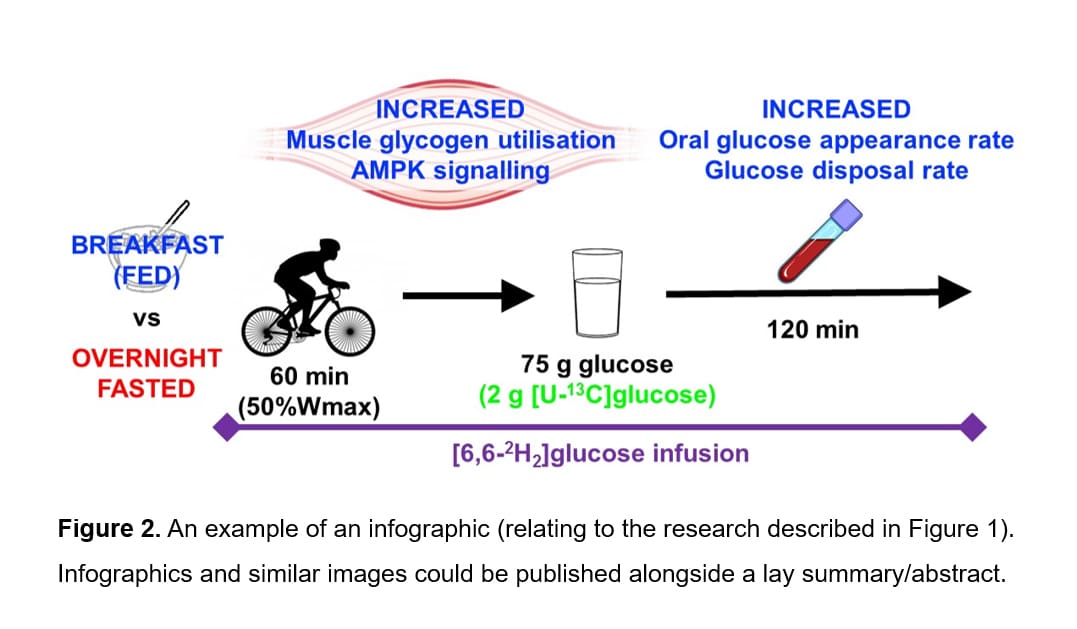
Physiology News Magazine
Fighting media misreporting: A case study in diet and exercise
News and Views
Fighting media misreporting: A case study in diet and exercise
News and Views
Robert Edinburgh, James Betts & Javier Gonzalez, Department for Health, University of Bath, UK
https://doi.org/10.36866/pn.113.22
Physiology research can provide insights into the mechanisms of disease and potential counteractive strategies (such as diet and exercise). For the majority of people living in developed countries, the information about diet and exercise that is most readily available is not peer-reviewed journal articles, but reports in newspapers and health magazines.
We spend hours obtaining funding and ethical approvals, collecting and analysing data, and writing manuscripts. When our research receives media attention, and the associated results are made accessible in newspapers, blogs and magazines, it is thus, extremely gratifying, as this can help to achieve more widespread impact.
However, even when this goal is achieved, the results from our work can be misreported, resulting in inaccurate and often confusing health messages. This inaccurate reporting of research by the media likely stems from a desire for high-impact messages, which appeal to a ”quick-fix” attitude to health. However, non-academics can then understandably become confused and disheartened due to a lack of consistency in health advice. Not only does this lead to the potential for the inappropriate application of the findings, it can also reduce public trust in science and researchers. As obesity and associated cardiometabolic diseases are increasingly prevalent, this represents an especially big problem.
Our group recently published a peer-reviewed article that received media attention (Edinburgh et al., 2018). Whilst many media reports were accurate, some (in widely read newspapers) inferred conclusions from outcomes that were not even measured. Our research made no inferences about body composition, yet the results were spun by some reporters into a new strategy for achieving weight loss (Fig. 1). To reduce the risk of media misreporting, we propose these five tips:
Ensuring that abstracts are clear and entirely reflective of the study results
For studies in diet and exercise, this includes being cautious about short versus longer term changes or adaptations. The abstract is likely to be the most widely read section of an article (by non-academics), so this may reduce the likelihood of any misinterpretation. Including “new and noteworthy” sections with a focus on how the research is applicable to the public (or target audience) may also help, and is especially important if the journal does not offer open access to the complete article.
Writing two abstracts, one for academics and one lay summary for the public
The lay abstract could also be combined with infographics and diagrams to further explain the results to non-academics (Fig. 2).

Working closely with press offices at universities to ensure that the message provided to the media is clear and accurate
Carefully writing our own news releases and engaging with opportunities for follow-up questions and interviews helps ensure that media reports will be accurate.
Organising regular public engagement events and engaging with social media
Setting aside time for engaging with social media to disseminate findings, engage directly with the public’s questions, and respond to inaccurate articles can also increase public trust towards researchers.
Increasing the time allocated to teaching students to be critical of what they read (in newspapers and journal articles)
Teaching young people to form their own opinions based on available evidence may be the most powerful longer-term solution to media misreporting (Gonzalez, 2018).
In addition to the many hours we spend performing research, we should allocate more time to ensuring that the message received by the public is always accurate. This relatively small investment may allow our research to have the greatest possible impact.
References
Edinburgh RM, Hengist A, Smith HA et al. (2018). Pre-exercise breakfast ingestion versus extended overnight fasting increases postprandial glucose flux after exercise in healthy men. American Journal of Physiology-Endocrinology and Metabolism. doi: 10.1152/ajpendo.00163.2018
Gonzalez JT (2018). Using misleading online media articles to teach critical assessment of scientific findings about weight loss. Advances in Physiology Education 42, 500-506.
